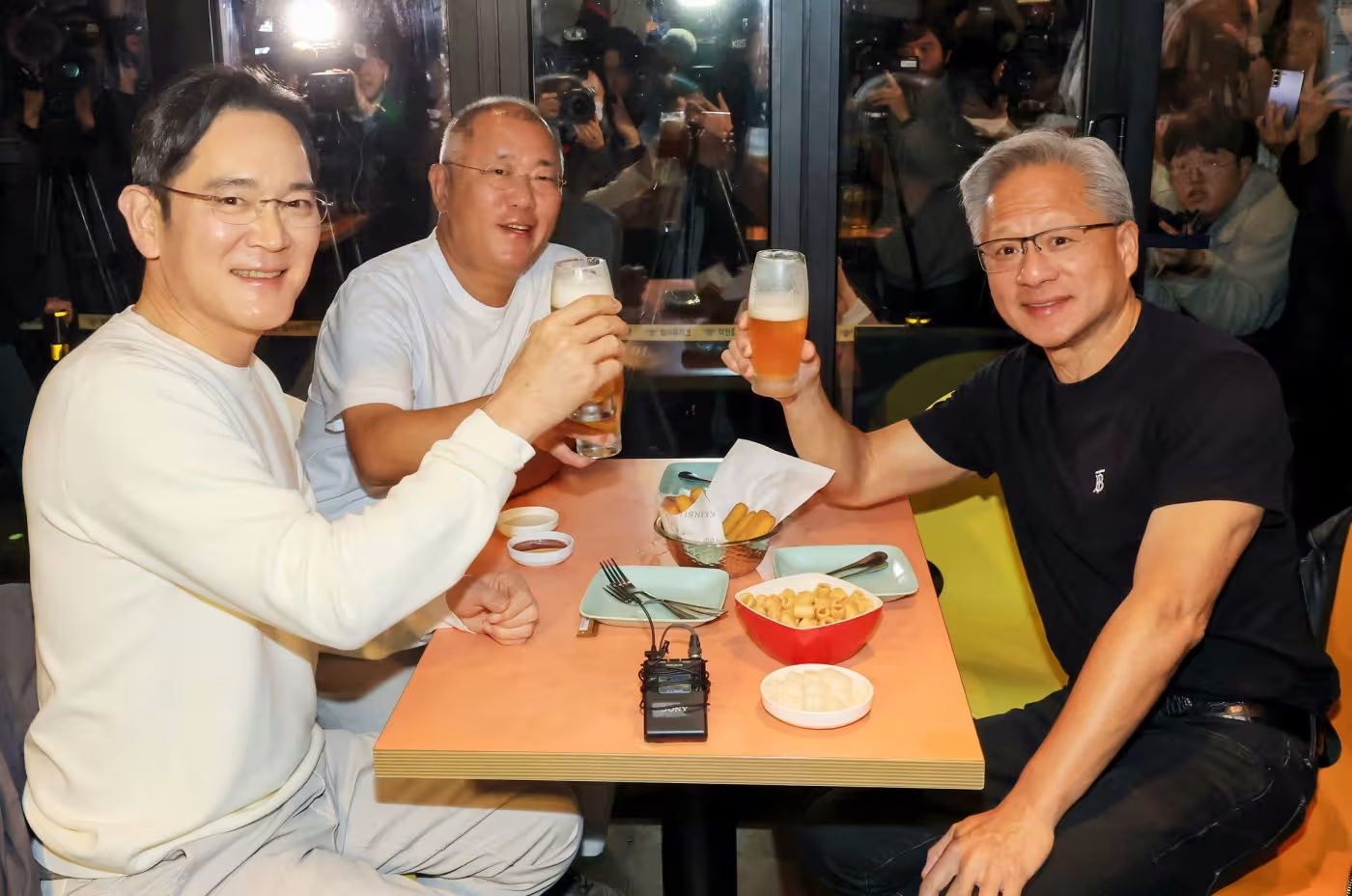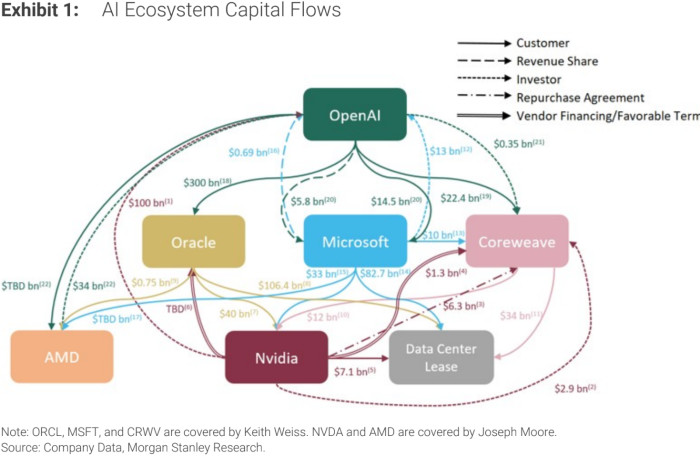

The AI bubble has reached its ‘fried chicken’ phase
Whenever a bubble bursts, there are some stories from their peaks that morph into endlessly-recounted legends that symbolise how mad people had become.
The paragon example is the listing of Pets.com in February 2000. It was far from the biggest IPO of the era, or the biggest failure. But the fact that it was able even go public so despite de minimis revenues has made it the most popular dotcom punchline.
Then there are things like strippers with multiple NINJA loans in 2007; the land under Tokyo’s Imperial Palace being worth more than all of California; a Scottish adventurer inventing an entire country to issue bonds, the formation of a company “for carrying on an undertaking of great advantage, but nobody to know what it is”; or 100,000 guilders being paid for a single Semper Augustus tulip bulb.
In time, this might end up becoming the emblematic stupidity of the AI boom.
Photos and videos of Nvidia Corp.’s CEO having beers and fried chicken at a local restaurant, Kkanbu Chicken, in Seoul — with Samsung Electronics Co. Chair Jay Y Lee and Hyundai Motor Co. Executive Chair Chung Euisun — went viral, and now investors are driving up the stocks that may be a beneficiary.
While Kkanbu is not publicly listed, shares of rival Kyochon F&B Co. briefly surged as much as 20% on Friday after photos and videos of the gathering circulated widely on social media. Korean poultry processor Cherrybro Co. also soared by the daily limit of 30%, with trading volume about 200 times its average. Neuromeka Co., a Kosdaq-listed company that makes chicken-frying robots, also jumped.
As Bloomberg points out, this is mostly an indictment of South Korean retail traders, who make American degens seem like spartan Swiss bankers. But the phenomenon of anything remotely AI-adjacent rallying hard is widespread — no matter how tenuous the connection.
And when there are at least somewhat real links, it’s like rocket fuel for a stock. Just take fuel cell manufacturer Bloom Energy.
The stock had already almost quintupled in 2025 before going on another mind-bending run this month, extending its 12-month gain to 1,166 per cent. At pixel time it is now valued at over $30bn — as much as H&M and more than United Airlines, ArcelorMittal, KraftHeinz, Vodafone or Fox — despite forecasted pre-tax profits of $83.5mn this year.
For more evidence that we are in the middle of the “we’re going to be ruefully laughing at this in the future” stage of the boom just look at the increasingly incestuous relationship between the AI companies themselves.
Even Morgan Stanley’s analysts have conceded that the AI industry has become “increasingly circular”, with suppliers funding customers, customers investing in suppliers, and vendor-customer revenue sharing agreements.
As Morgan Stanley noted, “the nature and complexity of these types of transactions make it difficult for investors to understand the true economics”:
• Suppliers are funding customer operations through equity investments. The supplier funding may allow other vendors that sell to the same customer to take on more debt by shoring up cash flow at their customer. The cascading effect enables further capacity build out. These financing arrangements increase customer purchasing power beyond what their own cash flow profiles may otherwise support.
• Heavy customer concentration amplifies both counterparty payment risk and risk to top-line growth, which ultimately depends on the success of AI monetization efforts.
• Revenue quality and overall AI demand is clouded by revenue-sharing arrangements among key players, which may allow parties to record the same revenue under US GAAP.
• Repurchase agreements may inflate demand by shifting risk back to the supplier.
• Investors should also monitor new and innovative funding sources and off-balance sheet transactions, which may further the opacity of risks and rewards.
Morgan Stanley even produced an Open-AI-focused chart a few weeks ago to illustrate the phenomenon.

Referenties
- Bron: Financial Times
- Link: https://www.ft.com/content/b0038b6f-d83d-4a6a-803a-fa089e2d10ef
- Afbeelding: Jay Y Lee, Chung Euisan and Jensen Huang chillaxing at a fried chicken restaurant in Seoul © via REUTERS
- Auteur: Robin Wigglesworth
- Datum: 31/10/2025
